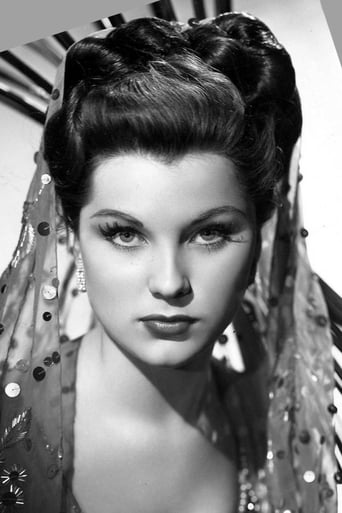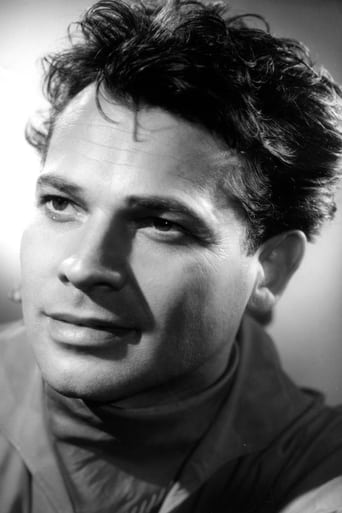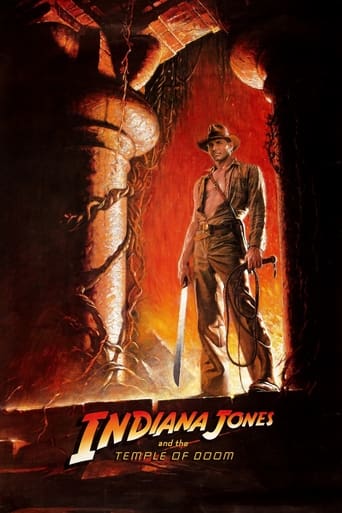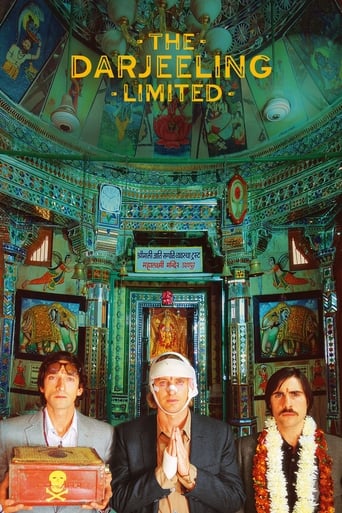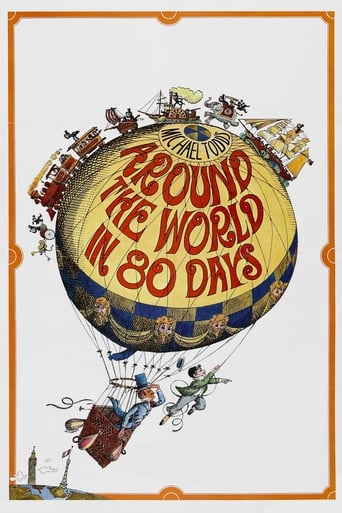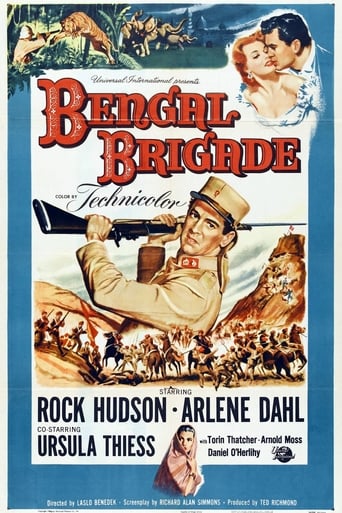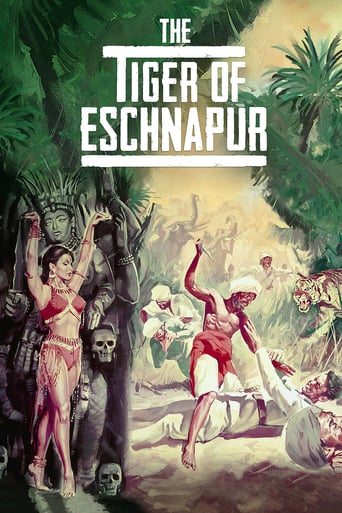

The Tiger of Eschnapur (1959)
In Eschnapur, a German architect saves the life of the Maharajah's favorite temple dancer and becomes Maharajah's friend but their friendship is tested when the architect and the dancer fall in-love, triggering the Maharajah's vengeful ire.
Watch Trailer
Cast


Similar titles
Reviews
Fritz Lang is one of those directors who managed the transition from silent film to sound film, even if most people will probably argue that his best works come from the days when there was still intertitles in films to tell us what the characters were saying. "Der Tiger von Eschnapur" is one of the last films of Lang and he was already in his late 60s when he made this one and it's actually a remake of a film that Lang already made considerably earlier in his career. This is also why Thea von Harbou, a couple years dead already by 1959, is listed as the writer. She also worked on the script of the original black-and-white films. This one here is in color and the first 100 minutes from a duology that continues with "Das indische Grabmal", another 1959 film. The cliffhanger ending also indicates this.I personally did not enjoy the watch too much. It starts off fairly solid, the characters are interesting, but sadly it does not stay this way for the entire film. I quickly lost interest in the story of an architect falling in love with a dancer, a woman that the local Maharajah also has an interest in. It's a tale about love, power and deceit, but it's nowhere near as good as it could have been. Looks like Lang already had his best days behind him and I cannot say I have a whole lot of interest in seeing the sequel, although I probably will soon and I hope it's actually 100 minutes that are improved to the 100 minutes we have here. As for the 1959 version of "The Tiger of Eschnapur", I do not recommend watching it unless you're a Lang completionist. It's not a failure, but also it's not a good film. Thumbs down. Oh yeah and a quick note about the cast. Do not be fooled by the characters in the film and the dark skin makeup because pretty much the entire cast is German. of course the clean speaking with no accents in this film also gives them away.
"Der Tiger von Eschnapur" is a film about a German architect who is brought to India to work for the Maharajah of Enschnapur (a fictitious kingdom). Along the way, he exercises very poor judgment and falls in love with a half-caste (Debra Paget) and they both risk their lives if they act upon this love. And so, naturally, they do and the film ends with their fleeing for their lives. Exactly what happens next, you'll need to see in the second film in this series--"The Indian Tomb".I enjoyed "Der Tiger von Eschnapur". It was the sort of film that was like a throwback to the 1940s--to the films of Universal Studios. In many ways, it was a bit like "The Cobra Woman", "Thief of Bagdad" or a movie serial--full of action, romance and escapism. On the other hand, it certainly was not a great piece of art--more like a B-movie with a slightly higher budget and a nice locale. Plus, Miss Paget had one of the sexiest dance numbers I can recall having seen apart from Rita Hayworth's in "Gilda". However, to put it bluntly, it was a decent film but not good enough to enable the director, Fritz Lang, to be able to mount a comeback to his former greatness. But with small bad touches (one-dimensional characters and some bad special effects--such as the obviously stuffed tiger during the big climactic scene and the wooden-looking severed head), it certainly isn't a great work of art--more just Saturday matinée escapism and nothing more. But, frankly, sometimes that is all you need to have a bit of fun.
While traveling to Bengal, invited by Maharaja Chandra (Walter Reyer) to build schools and hospitals for his people, the German engineer Harold Berger (Paul Hubschmid) rescues the servant of the half-breed dancer Seetha (Debra Paget) from the harassment of a group of men in a fountain. They travel together to Chandra's palace and Berger saves Seetha from the attack of a tiger in the road through the woods. The widower Chandra intends to get married with Seetha and thanks Berger for his heroic attitude, giving an emerald ring to him to express his gratitude and friendship. Chandra proposes Seetha, but Berger and she are in love for each other and have secret encounters during the nights. Meanwhile Chandra's elder brother Prince Ramigani (René Deltgen) is plotting a scheme to grab power and trying to convince Chandra's brother-in-law Prince Padhu (Jochen Brockmann) to join him. When Chandra is informed that Berger secretly meets his beloved Seetha, he plots revenge against the engineer, but he escapes with Seetha through the desert. Chandra sends his men to hunt the couple while Berger's sister and her husband and Berger's partner Walter Rhode (Claus Holm) arrive to the palace to begin the construction of the buildings. However, Chandra changes his mind and orders the engineer to develop a project of a monumental tomb to his lost love. In the meantime, Berger and Seetha's horses die, they run out of water and they are surprised by a sand storm."Der Tiger von Eschnapur" is the first of the two "Fritz Lang's Indian Epics" of the director Fritz Lang in his return to German. The exotic and mystic romance has many action scenes and engaging subplots of betrayals, with the gorgeous Debra Paget performing magnificent choreography with her dance. The colors are splendidly restored in the DVD released in Brazil by Continental in the beautiful locations and sets. My vote is eight.Title (Brazil): "O Tigre de Bengala" ("The Tiger of Bengal")
Der Tiger von Eschnapur looks like a silent movie with dialogue. The settings are magnificent and the story telling comes close to Der Müde Tod. Unfortunately the characters will speak and that breaks the magic in it. Especially for the lead actor playing architect Harald Berger: he is awful and it's even worse with the dubbing in the French version. I wonder why Fritz Lang had to make do with him. Perhaps his eyesight was starting to decline. Perhaps he was just not able to shoot his great tragedies of the 20s with dialogue although he prided himself on being a good script doctor. Well, he had to adapt to the American Motion Picture Industry then his Art would be stemmed, obstructed.The pity is Fritz Lang never topped himself after his marvelous silent works of the 20s. Metropolis is overrated but despite all the wooden sentimentalism in it we have insights of the German director at his best. With M he gave us the best out of the silent era but he never again reach the magic of his previous work. While it took twenty years to Hitchcock to come to the masterpieces he shot in the 50s Lang did not improve his visual mastering. And worst of all the scripts he was handed in Hollywood hardly appealed to his deepest talent whereas he closely engaged in the making of Thea von Harbou's screenplays.


